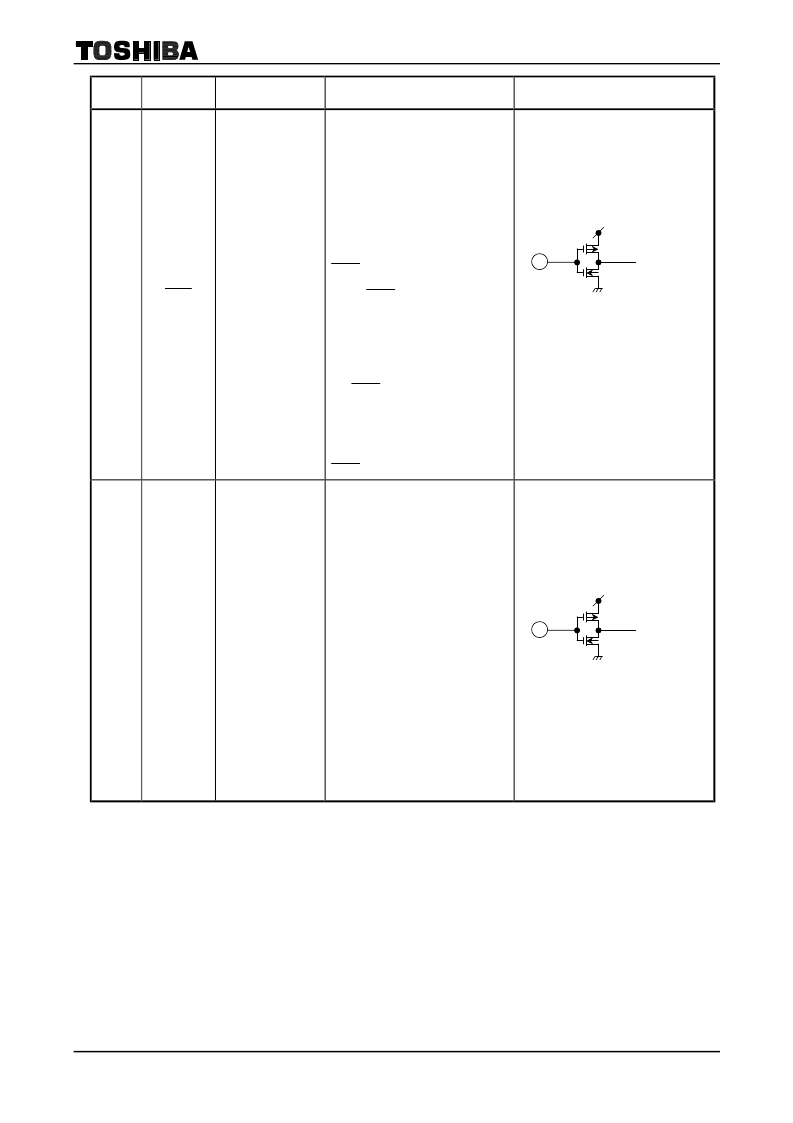- 您現(xiàn)在的位置:買(mǎi)賣(mài)IC網(wǎng) > PDF目錄373606 > TC9325F (Toshiba Corporation) Single-Chip DTS Microcontroller (DTS-20) PDF資料下載
參數(shù)資料
| 型號(hào): | TC9325F |
| 廠(chǎng)商: | Toshiba Corporation |
| 英文描述: | Single-Chip DTS Microcontroller (DTS-20) |
| 中文描述: | 單芯片微丘(丘- 20) |
| 文件頁(yè)數(shù): | 7/101頁(yè) |
| 文件大小: | 1802K |
| 代理商: | TC9325F |
第1頁(yè)第2頁(yè)第3頁(yè)第4頁(yè)第5頁(yè)第6頁(yè)當(dāng)前第7頁(yè)第8頁(yè)第9頁(yè)第10頁(yè)第11頁(yè)第12頁(yè)第13頁(yè)第14頁(yè)第15頁(yè)第16頁(yè)第17頁(yè)第18頁(yè)第19頁(yè)第20頁(yè)第21頁(yè)第22頁(yè)第23頁(yè)第24頁(yè)第25頁(yè)第26頁(yè)第27頁(yè)第28頁(yè)第29頁(yè)第30頁(yè)第31頁(yè)第32頁(yè)第33頁(yè)第34頁(yè)第35頁(yè)第36頁(yè)第37頁(yè)第38頁(yè)第39頁(yè)第40頁(yè)第41頁(yè)第42頁(yè)第43頁(yè)第44頁(yè)第45頁(yè)第46頁(yè)第47頁(yè)第48頁(yè)第49頁(yè)第50頁(yè)第51頁(yè)第52頁(yè)第53頁(yè)第54頁(yè)第55頁(yè)第56頁(yè)第57頁(yè)第58頁(yè)第59頁(yè)第60頁(yè)第61頁(yè)第62頁(yè)第63頁(yè)第64頁(yè)第65頁(yè)第66頁(yè)第67頁(yè)第68頁(yè)第69頁(yè)第70頁(yè)第71頁(yè)第72頁(yè)第73頁(yè)第74頁(yè)第75頁(yè)第76頁(yè)第77頁(yè)第78頁(yè)第79頁(yè)第80頁(yè)第81頁(yè)第82頁(yè)第83頁(yè)第84頁(yè)第85頁(yè)第86頁(yè)第87頁(yè)第88頁(yè)第89頁(yè)第90頁(yè)第91頁(yè)第92頁(yè)第93頁(yè)第94頁(yè)第95頁(yè)第96頁(yè)第97頁(yè)第98頁(yè)第99頁(yè)第100頁(yè)第101頁(yè)

TC9325F
2002-05-14
7
Pin No.
Symbol
Pin Name
Function and Operation
Remarks
67
HOLD
Hold mode control
input
Input pin for requesting and releasing
Hold mode.
Normally used to input radio mode
selection or battery detection signals.
Hold mode includes Clock Stop mode
(crystal oscillator stopped) and Wait
mode (CPU stopped), which can be
set by the CKSTP and WAIT
instructions respectively.
Clock Stop mode can be entered by
software in one of two ways: forcibly
or when Low level is detected on the
HOLD
pin. Clock Stop mode can be
released when High level is detected
on the
HOLD
pin or when the input
changes. Executing the CKSTP
instruction stops the clock generator
and CPU, entering memory backup
mode. In this state the device is set to
low current dissipation (10
μ
A max).
Wait mode is executed, regardless of
the
HOLD
pin input state, and the
device is set to low current
dissipation. To set wait mode, specify
by software either crystal oscillator
only operating or CPU suspended.
Wait mode is released when the
HOLD
pin input changes.
68
69
INTR1
INTR2
/PCTRin
External interrupt
input
/pulse count input
External interrupt input pins.
Enabling the interrupt function and
inputting a pulse (of at least 1.11 to
3.33
μ
s when the 4.5 MHz clock is in
use, or at least 13.3 to 40
μ
s when the
75 kHz clock used) to these input pins
generates an interrupt (INTR1/2) and
jumps the program to address 1/2.
The input logic and the clock edge
(rising/falling) can be individually
selected for each interrupt input.
The internal 8-bit timer clock can be
selected as input to the pins. At the
pulse count or when the count
reaches a specified value, an interrupt
can be generated (to address 5).
These pins are also used to input an
8-bit pulse counter. This counter can
be selected between rising and falling
edge input and between an
up-counter and a down-counter.
These pins are Schmitt inputs and can
also be used as input ports. The pins
can also be utilized as ports for
inputting remote control signals or
tape counts.
V
DD
V
DD
相關(guān)PDF資料 |
PDF描述 |
|---|---|
| TC9327 | DTS MICROCONTROLLER |
| TC9327F | DTS MICROCONTROLLER |
| TC9331 | AUDIO DIGITAL SIGNAL PROCESSOR |
| TC9331F | AUDIO DIGITAL SIGNAL PROCESSOR |
| TC9332 | AUDIO DIGITAL SIGNAL PROCESSOR |
相關(guān)代理商/技術(shù)參數(shù) |
參數(shù)描述 |
|---|---|
| TC9327 | 制造商:TOSHIBA 制造商全稱(chēng):Toshiba Semiconductor 功能描述:DTS MICROCONTROLLER |
| TC9327BFG | 制造商:TOSHIBA 制造商全稱(chēng):Toshiba Semiconductor 功能描述:DTS Microcontroller (DTS-21) |
| TC9327F | 制造商:TOSHIBA 制造商全稱(chēng):Toshiba Semiconductor 功能描述:DTS MICROCONTROLLER |
| TC9328AF | 制造商:TOSHIBA 制造商全稱(chēng):Toshiba Semiconductor 功能描述:Portable Audio DTS Controller (DTS-21) |
| TC9328AF_04 | 制造商:TOSHIBA 制造商全稱(chēng):Toshiba Semiconductor 功能描述:Portable Audio DTS Controller (DTS-21) |
發(fā)布緊急采購(gòu),3分鐘左右您將得到回復(fù)。